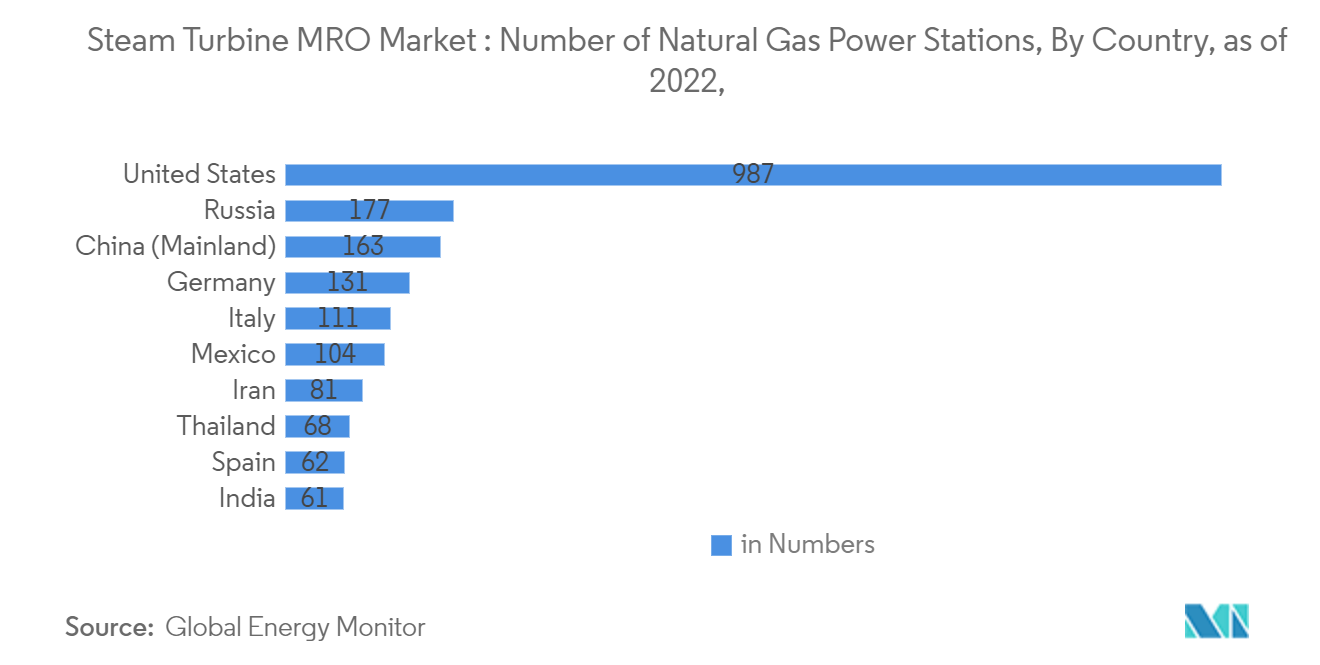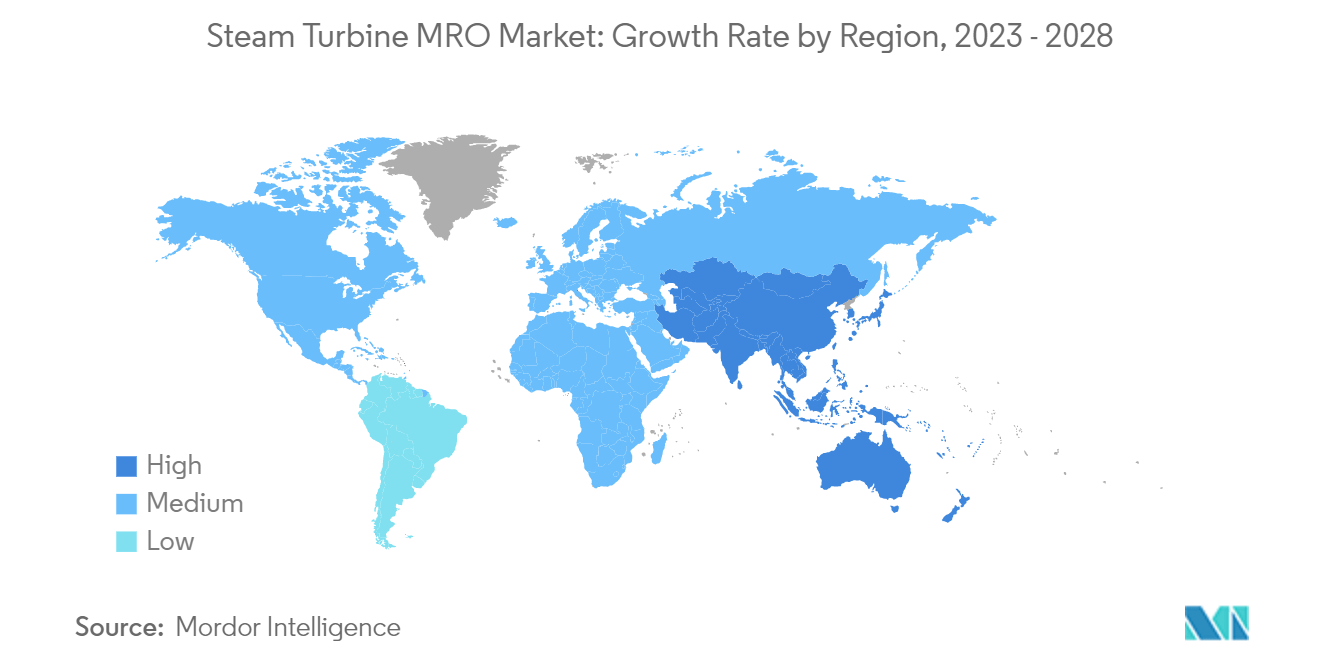Market Trends of Steam Turbine MRO Industry
Maintenance Segment to Witness Significant Growth
- To make sure that power equipment works well, companies and power plant operators must do regular maintenance services like inspections, part replacements, diagnosis, and repairs.This improves operational performance and ensures the long-term, stable operation of the facility.
- A lot of power companies and independent power producers sign long-term service agreements (LTSAs) to meet the needs of their plants. These agreements cover a wide range of services, including fleet management, inventory management, maintenance, repair, and overhaul, as well as day-to-day technical support for gas turbines.
- Due to the properties of clean fuel, its demand is growing in almost every major country. However, only deploying gas turbines does not guarantee any flexibility in operations for the long term, and here, MRO services come into the picture. Thus, many countries have started using maintenance services, either at the beginning of the plant's operation or after crossing a specific period.
- According to the Global Energy Monitor, as of 2022, the total number of gas power stations includes the United States with 987, Russia with 177, and China (Mainland) with 163 power plants.
- Going ahead, steam turbines are used in many applications on various scales to drive equipment such as pumps, compressors, and generators. Periodic, preventive maintenance is crucial to ensuring reliable and efficient operation. For a power generation site in France, a significant outage was made more cost-effective and easier to manage by using Sulzer to deliver a major overhaul on the turbine and the gearbox and pump connected to it.
- Many countries look forward to generating electricity from natural gas and are on the verge of closing coal-fired power plants. For example, in the U.S., as of 2021, around 32.3 GW of new natural gas-fired power plants were in advanced stages of development and were set to start up in 2025. Out of these, 14.2 GW are under construction, 3.4 GW are in pre-construction, and 14.7 GW have a status of advanced permitting. The growing natural gas power plants will require steam turbines to convert the heat energy of steam into mechanical energy. Since the steam turbine requires maintenance regularly to offer efficiency, this culminates in the market's growth.
- Due to what has been said above and what has happened recently, the maintenance segment is expected to lead the steam turbine MRO market over the next few years.

Asia-Pacific is Expected to Dominate the Market
- Asia-Pacific is the biggest market for steam turbines, and over the next few years, there will be a lot of demand for services like maintenance, repair, and overhauling.
- As the amount of electricity used per person around the world goes up, planned thermal plants like the Phulari Coal Powered Plant in Bangladesh and the Patratu Super-Thermal Power Plant (coal) in India are likely to keep steam turbine MRO services growing in the near future.
- Manufacturers of turbines recommend that users check the turbines every three months for the first two years, and then every year after that.Such agreements help bring down overall costs and make gas turbines more powerful by using parts with better performance.This is expected to increase the demand for maintenance, repair, and overhaul services.
- China, which uses a lot of steam turbines, is building the most thermal power plants of any country in the world. Ultra-supercritical coal plants like Fuyang Power Station and Huadian Laizhou Power Station are being built to match the electricity demand.
- As of 2021, around 22 coal-powered plants were under construction in Japan, including power plants like Hitachinaka Kyodo power plant and Nakoso power plant, which are expected to provide more than 1000 MW of electricity and are likely to get maintained and repaired in the near future, which in turn culminates in the growth of the market.
- Asia-Pacific is expected to lead the market for steam turbine maintenance, repair, and overhaul (MRO) during the forecast period. This is because of the things mentioned above and the recent changes.


